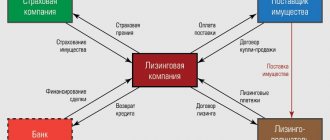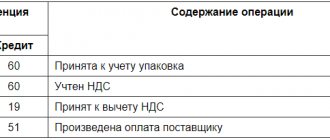How to count books and magazines:
Many companies subscribe to various newspapers and magazines, buy books and books. Their accounting raises many questions among accountants. The Ministry of Finance recently responded to some of them.
How to reflect payment for publications
There are two ways to pay for printed publications:
– in advance. In this case, the company first transfers money and then receives magazines or newspapers over a certain period of time. As a rule, the subscription is issued for three or six months;
– directly at the publisher or in the store. In this case, you pay money and immediately receive printed products.
Most companies use the first option. Consider the money transferred for magazines as advances issued:
Debit 60 subaccount “Advances issued” Credit 51
– money for subscription has been transferred.
Please note: the tax inspector may consider that prepayment for publications should be taken into account as deferred expenses. In this case, you will have a property tax debt. The fact is that future expenses increase this tax.
In this case, disagree with the inspector. Justify your position like this.
Costs arise when the firm's economic benefits are reduced (for example, you paid a materials supplier). This is what is written in paragraph 16 of PBU 10/99.
But this does not happen when you pay for a subscription. After all, you have not yet received any products. The company simply made an advance payment. Therefore, the transferred money must be taken into account as advances issued.
If you do not want to argue with the tax inspector, then reflect the subscription costs as deferred expenses. You can read how to do this in the “Correspondence of invoices” berator on page VIII/97/03.
Example 1.
CJSC Aktiv subscribed to the Practical Accounting magazine for the first six months of 2003. The company paid 1,200 rubles for this. (including 10% VAT – 109 rubles).
The Aktiva accountant reflected the subscription as follows:
Debit 60 subaccount “Advances issued” Credit 51
– 1200 rub. – money for subscription has been transferred.
As new issues of magazines or newspapers arrive, write off their cost as expenses. The Ministry of Finance explained how to do this in a recently published letter dated August 26, 2002 No. 16-00-12/19.
How to reflect the receipt of publications
Consider printed publications as fixed assets. Record each magazine, takeaway or book you receive separately.
Reflect the receipt of literature as follows:
Debit 60 Credit 60 subaccount “Advances issued”
Debit 68 subaccount “VAT calculations” Credit 19
– submitted for VAT deduction.
Please note: in order to deduct VAT, you must have an invoice. If you do not have this document, call the publisher and ask them to send it.
Reflect the received publications in a special book for recording literature. There is no special form for it. Therefore, enter it in any order. For example, this book might look like this:
We take into account subscriptions to periodicals
Some accountants charge subscription fees as a deferred expense in accounting. But it's not right. The amount paid for the subscription is an advance and is reflected in the debit of account 60 “Settlements with suppliers and contractors”.
Having received the next issue of a magazine or newspaper, based on primary documents, we take into account its cost in account 10 “Materials” (debit account 10 - credit account 60) and immediately write it off as expenses for ordinary activities (debit account 20 (26) - credit account 10) . When subscribing to electronic publications, having received an invoice and a statement, we write off the cost of the subscription directly to expenses, bypassing the 10th invoice.
When calculating income tax, expenses for professional publications are included in other expenses related to production and sales. At the same time, for tax purposes, you can count as expenses a subscription to several printed publications on the same topic at the same time.
VAT on subscription is deductible in the following order.
STEP 1. When we receive an advance invoice from the publisher with the allocated amount of VAT, we accept it for deduction.
STEP 2. Upon receipt of an invoice for numbers already supplied (basically they are included in each number):
- we accept VAT for a specific publication number for deduction;
- At the same time, we restore the same amount of VAT accepted for deduction on the advance invoice.
For daily newspapers, as a rule, one invoice is issued, for example for a month or a quarter.
Accountable persons - who are they?
Who are the accountable persons? These are employees of the organization who have the right to take money on account. The list of such people is approved by order of the head. Money can be issued from the organization’s cash desk or transferred from a current account to employees’ personal bank cards.
How exactly to issue money to an account from the cash register or make a transfer to an employee’s card, read the articles:
It must be remembered that the employee must write an application for the issuance of money regardless of the method of issuing the money.
What mandatory details should an application for the issuance of money contain, read the article “We are preparing an application for reporting - a sample for 2015–2016.”
How to take into account purchased books, subscriptions to newspapers, magazines?
Many companies purchase books and subscribe to periodicals. Someone buys manager's reference books, books on accounting, updated editions of the Tax Code, specialized magazines and newspapers, and technical reference books. And some people buy entertainment and fiction.
The procedure for recording printed publications directly depends on their purpose and your ability to justify their “production and management focus.”
We justify the need to purchase books and printed publications
To begin with, it is important to determine how books, magazines and other printed publications are related to your production activities.
For example, the following costs can be considered quite reasonable:
- for magazines (newspapers) and books on accounting and taxes, for example, the “General Ledger” magazine, since the accountant needs them for proper accounting;








